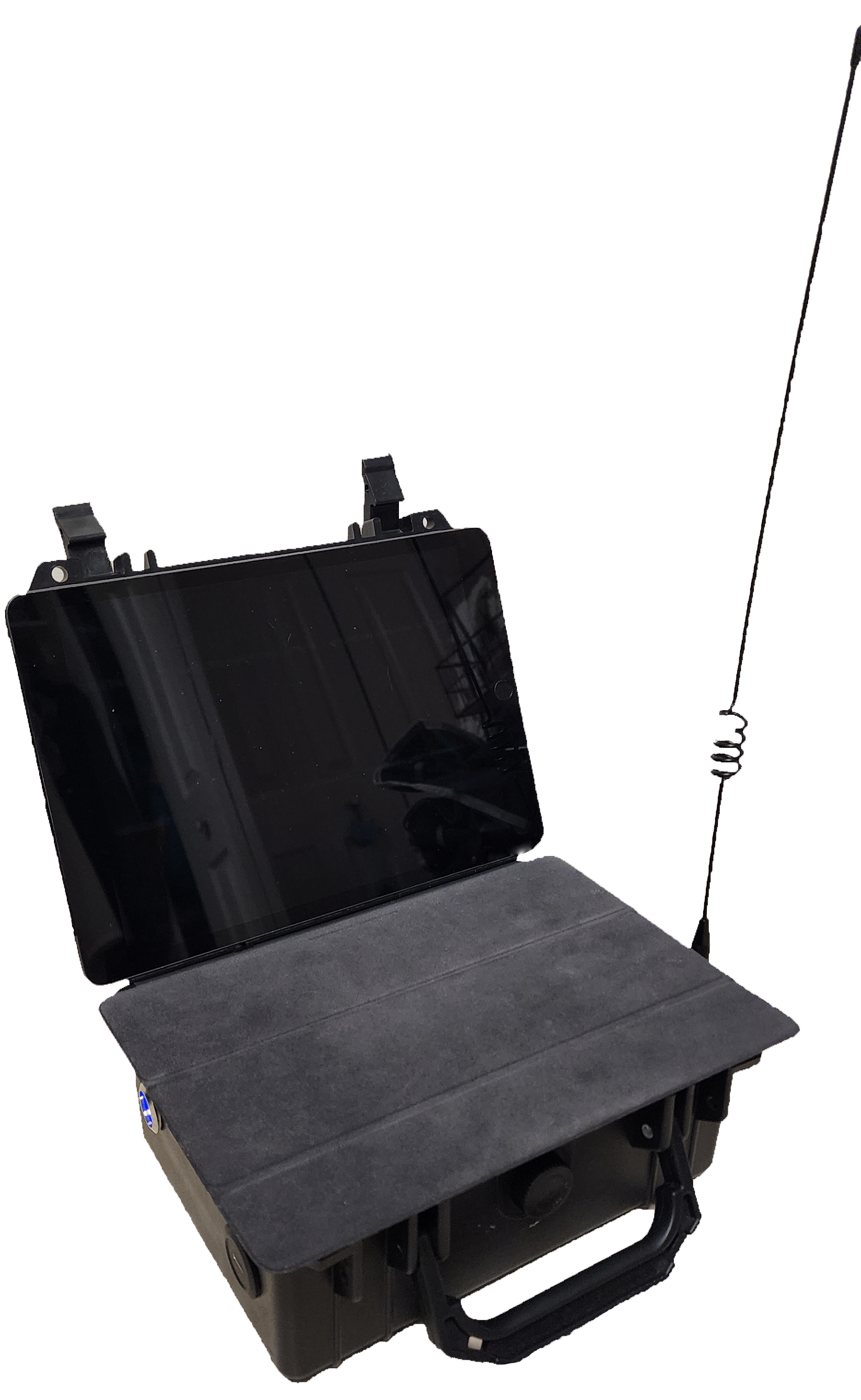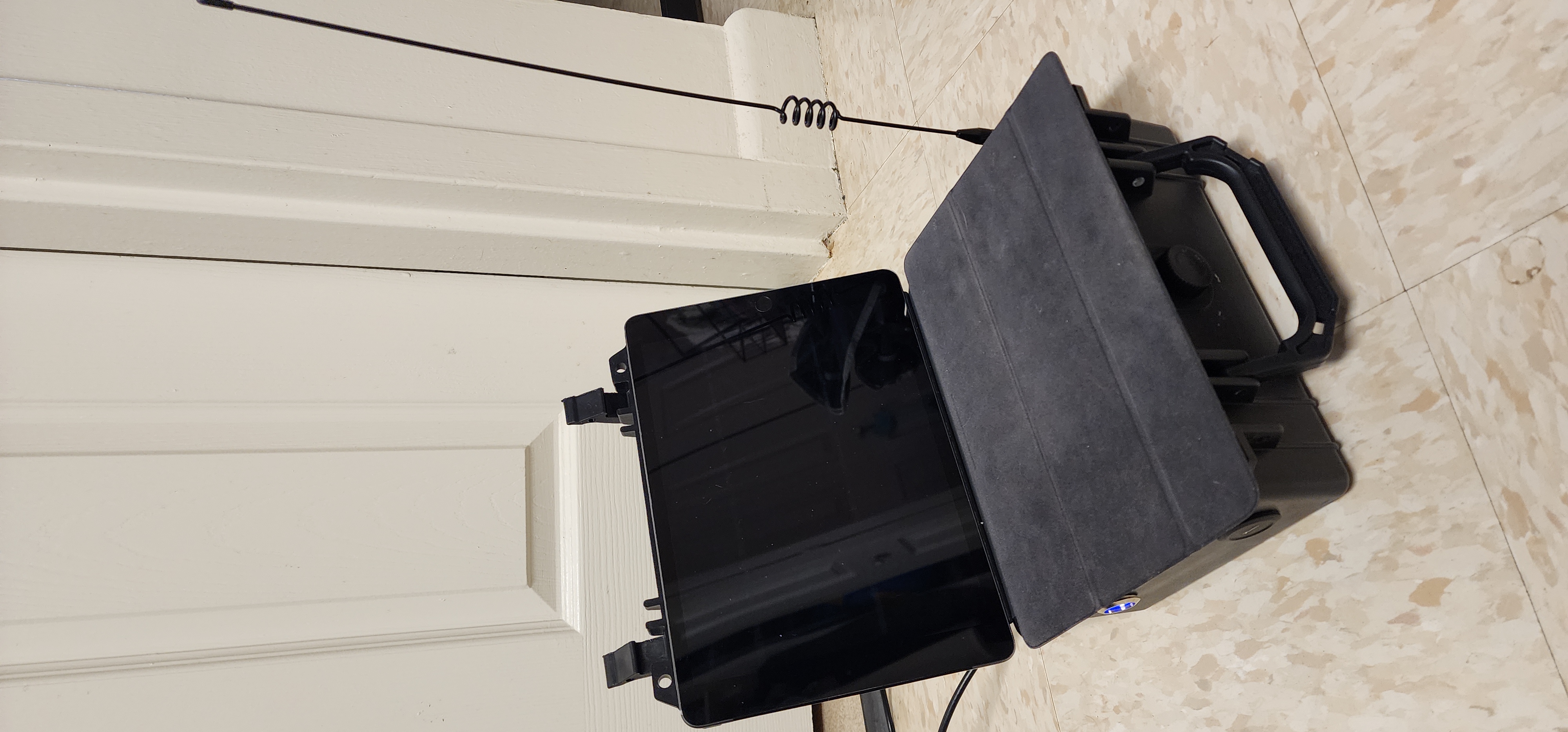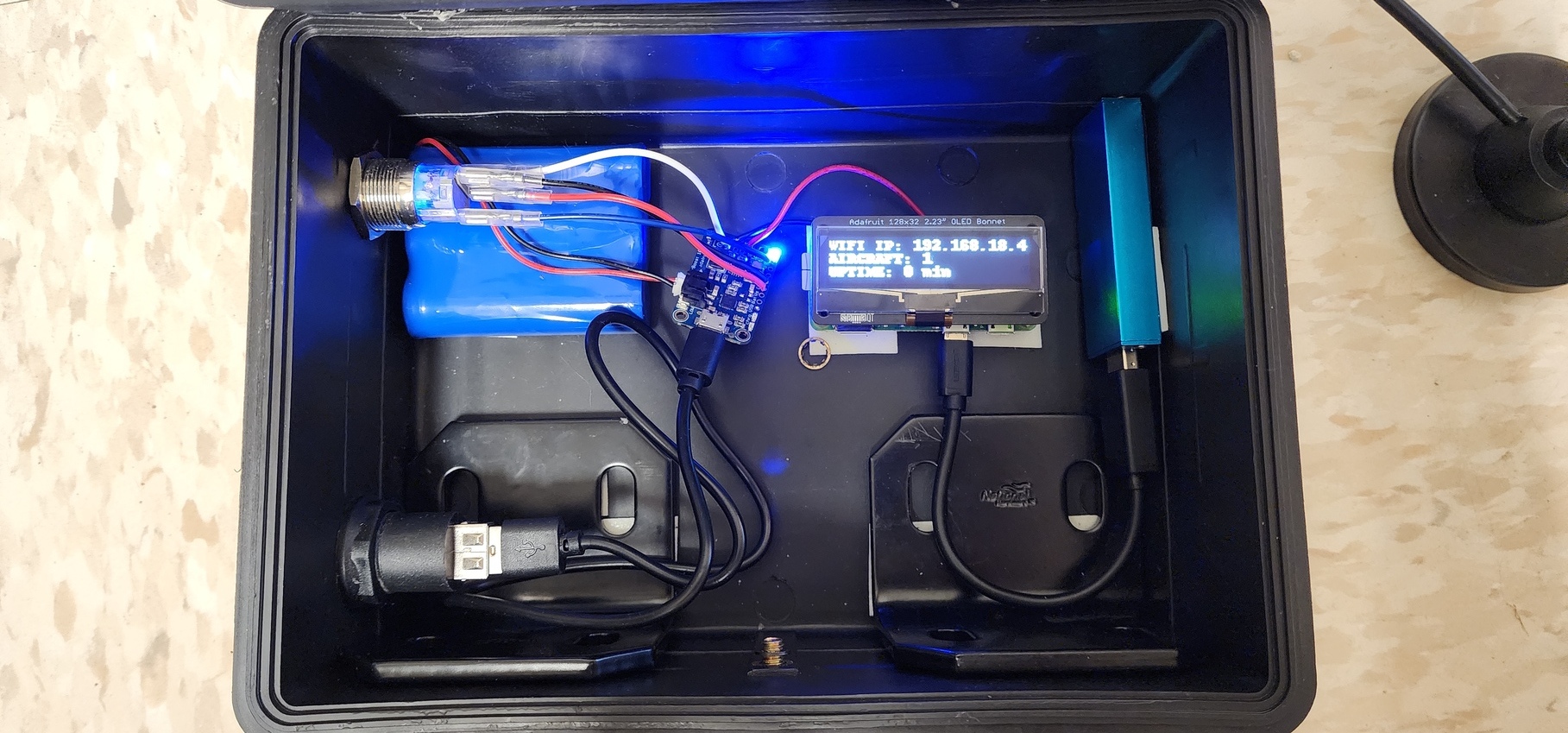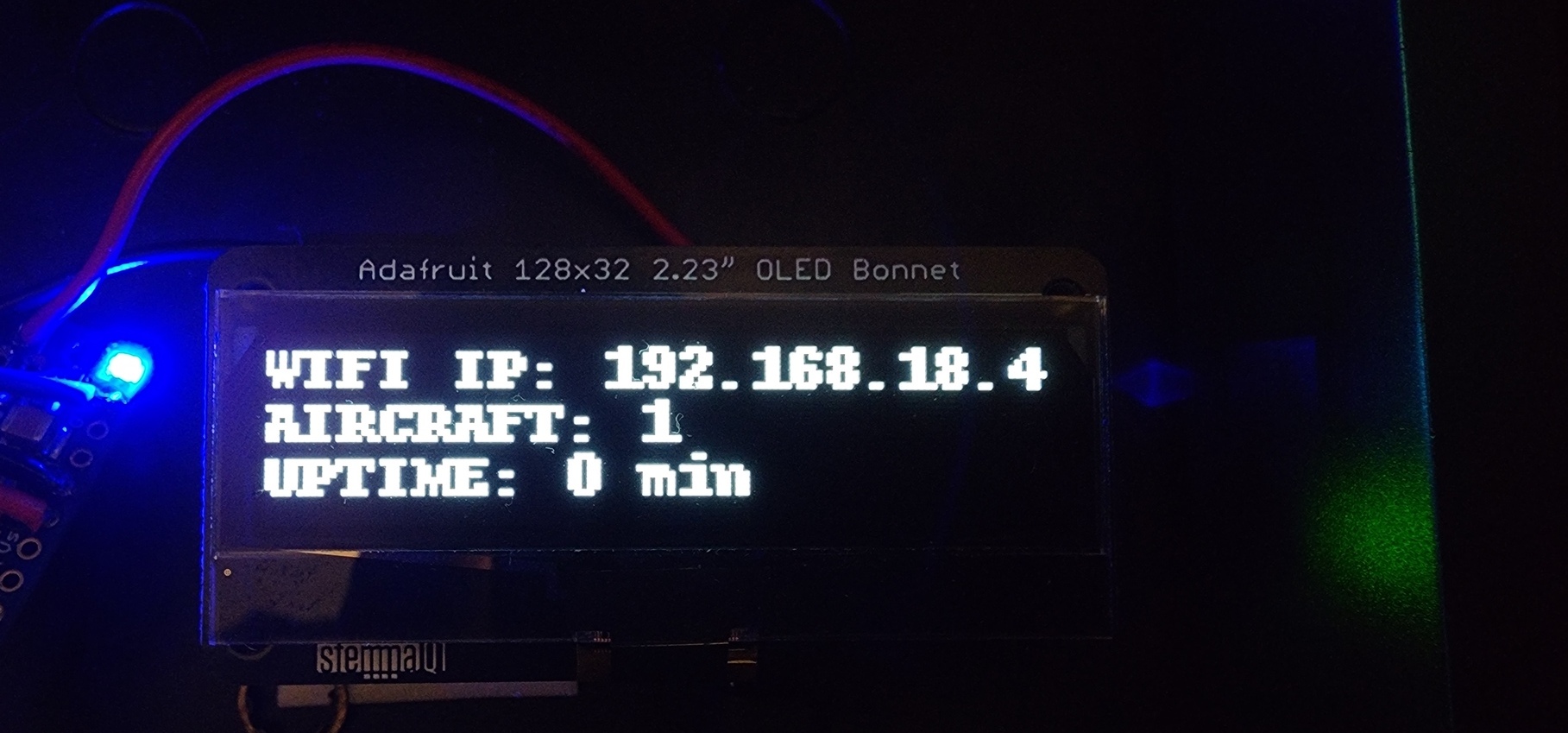


The device is powered by a Raspberry Pi Zero 2 W, allowing for both bluetooth and wireless connections to the device. For power, the device uses a LiPo battery managed by a Adafruit Powerboost. As a means to visually inspect the device, a small OLED three line display is mounted to the top to showcase key device stats including number of aircraft visible, current device IP, bluetooth device connect, and many more.


